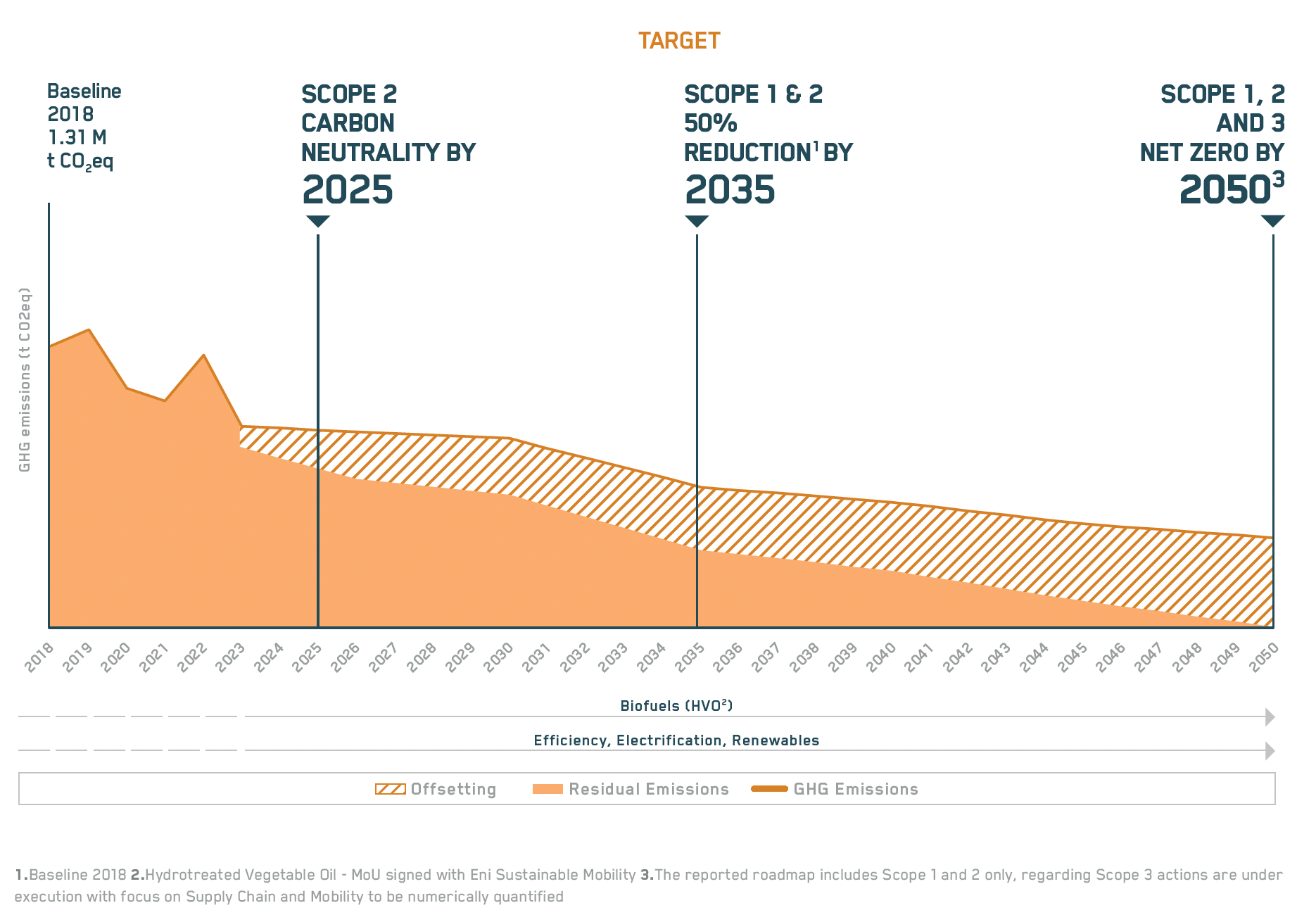Decarbonization is not only a goal, but also a process, where we constantly lay the foundations for the next step towards a sustainable future.
Looking to the future, we are aware that the progress made today and tomorrow rests on the shoulders of the progress that was made yesterday.
Roadmap of the Net Zero Program and long-term targets

4 Key drivers
Our Net Zero plan
The Net Zero plan maps out the decarbonization of our activities. It also outlines how we can support our clients “decarbonize” their own businesses thanks to our qualified role as an advanced technology platform.
Based on these two aspects, our action will be implemented through solutions for renewable energies, the reduction of greenhouse gas emissions, the improvement of energy efficiency, the decarbonization of Oil & Gas and digital transformation.
We planned a set of actions within our Net-Zero Programme to reduce our emissions and meet targets set.
The three “Rs”
Scope 1 and 2 emissions will be reduced over time through three key phases, attributable to three “Rs”:
-
Retrofit – First phase, where the energy efficiency of Saipem's operations and assets are increased based on the use of best available technologies.
-
Renewal – Second phase, where assets are replaced with innovative assets, which are more energy efficient and with lower greenhouse gas emissions, thanks also to digitalisation, which will make it possible, for example, to complete high-risk operations without the physical presence of personnel.
-
Renewables/CSS – Third phase, with mass recourse to both conventional and advanced renewable energies and technologies, such as floating solar and marine energy, and possible application of Carbon Capture & Storage technologies where feasible on assets.
Furthermore, Scope 1 and 2 emissions will also be reduced thanks to:
-
Electrification, with the transition from electricity generation using fossil-fulled generators to the electricity grid.
-
Alternative fuels, thanks to the replacement of fossil fuels with low carbon-emission fuels (e.g. HVO biofuel).
Energy supply routes
In order to meet the Scope 2 objective, we will prioritise the following criteria in order of importance when sourcing energy:
-
Energy saving and efficiency
-
Renewable energy from the grid or self-produced
-
Offsetting for residual emissions, to be applied only on completion, after having considered all the measures above.
Working together with the supply chain
One of the biggest challenges in reducing our carbon footprint is related to indirect emissions, whose largest share comes from the company’s supply chain.
Saipem will support Customers, Suppliers and different players in the value chain in their decarbonization process, acting as a facilitator for strategies and technologies with a low impact in terms of greenhouse gas emissions.